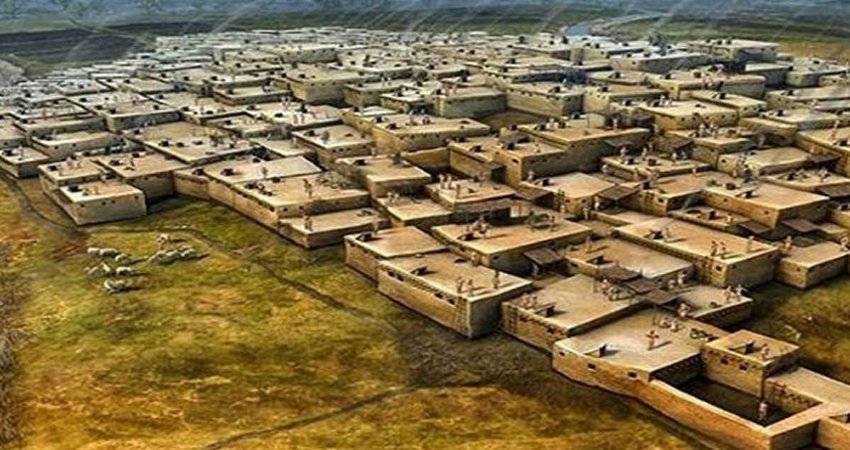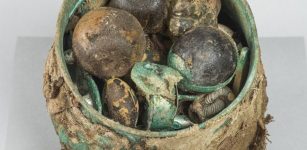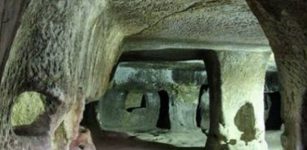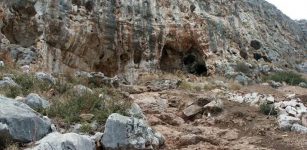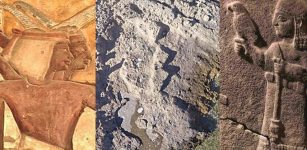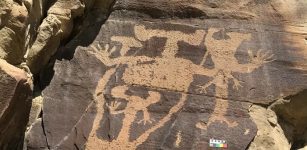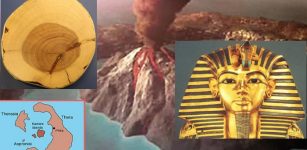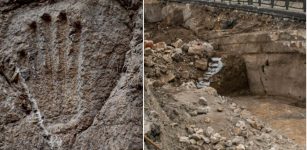‘Skeleton Mosaic’ – 2,400-Year-Old Scenes Depicted On Glass Artwork Found In Turkey
MessageToEagle.com – A skeleton lying down with a jorum in his hand and a wine pitcher and bread on the side, is depicted on a beautiful, 2,400-year-old mosaic discovered in Antakya, Hatay Province in southern Turkey.
The mosaic dated to the 3rd century BC was discovered during construction work near the ancient city of Antioch, located on the Mediterranean coast in southern Turkey.

Three scenes are depicted on this glass mosaic, one of which depicts a skeleton with a drinking pot in his hand along with bread and a wine pot. The words, written in Greek and depicted on this fragment of the mosaic are: “be cheerful, live your life.”
The next scene, which symbolizes the bath, shows a black man, who throws fire; and yet another scene, depicts a young clothed man running towards it with a bare-headed butler behind.
See also:
Beautiful Mosaics From The Ancient City Of Zeugma, Turkey
The sundial is between 9 p.m. and 10 p.m. 9 p.m. is the bath time in the Roman period. He has to arrive at supper at 10 p.m. Apparently, the man is not well-received, which is confirmed by writing on the scene, informing that he is late for supper.

This mosaic is unique in Turkey, according to Demet Kara, an archaeologist from the Hatay Archaeology Museum.
“There is a similar mosaic in Italy but this one is much more comprehensive. It is important for the fact that it dates back to the 3rd century BC,” said Kara, adding that Antiocheia was the world’s third largest city in the Roman era.
“Antiocheia was a very important, rich city. There were mosaic schools and mints in the city. The ancient city of Zeugma in [the southeastern province of] Gaziantep might have been established by people who were trained here. Antiocheia mosaics are world famous.”
The ancient city of Antioch was established by Seleucus I Nicator -who is one of Alexander the Great’s generals- in the 4th century BCE. It is known to be the first place where the followers of Jesus were referred to as Christians.
Hatay is known for its Roman-era mosaics dating back to the second and third centuries BC.
MessageToEagle.com
Expand for references
